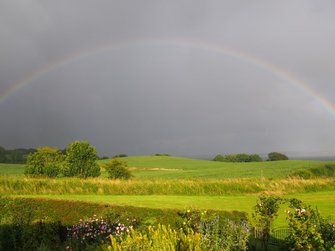
Land use and land use change (LULCC) manifest as complex phenomena involving multiple, often nonlinear processes extending over different spatial and temporal scales. At the same time, essentially LULCC is a result of complex interlinkages between the biophysical characteristics and human systems. These processes are relevant for both rural and urban settings. Efforts to understand these phenomena thoroughly and effectively therefore need to be grounded in interdisciplinary paradigms drawing on both natural and social science perspectives. In doing so, these efforts need to consider spatial dimension in an explicit manner since LULCC and the implications of proposed interventions are spatially varied. Rich insights from such efforts are expected to contribute towards better, more effective policies, regulations and planning for land use by fully taking into account environmental, social and economic sustainability at various scales (local, national, regional, and global).
The overarching aim of the SGA is to develop and to apply scientifically robust quantitative models that combine data and methods linking both natural science and social science domains. Research within the SGA seeks to integrate the strengths of and expertise in economic, spatial, hydrological catchment, marine and air quality/pollution modelling, and within nature/biodiversity and ecosystem services research. The integrated and spatial modelling endeavours seek to capture the interdependence between the environmental phenomenon(a) related to LULCC, the impacts and the policy/market/household responses at different spatial scales. In this way, the focus of the SGA is on understanding both direct and indirect impacts, feedback mechanisms, as well as intended and unintended side effects of alternative policy responses. The SGA has a strong interest and expertise in applying spatial analysis in a wide range of issues related to LULCC. Overall, the SGA places emphasis on undertaking analysis and developing models that are spatially explicit and have clear policy relevance.
Integrated and spatial modelling for environmental management - publications within the research area.
...
Steen Gyldenkærne
, Senior Researcher
, Department of Environmental Science - Atmospheric Emissions & Modelling
Gregor Levin
, Senior Advisor
, Department of Environmental Science - Environmental social science and geography
Mette Hjorth Mikkelsen
, Special Consultant
, Department of Environmental Science - Atmospheric Emissions & Modelling
Doan Nainggolan
, Senior Researcher
, Department of Environmental Science - Environmental social science and geography
Marianne Zandersen
, Professor
, Department of Environmental Science - Environmental social science and geography